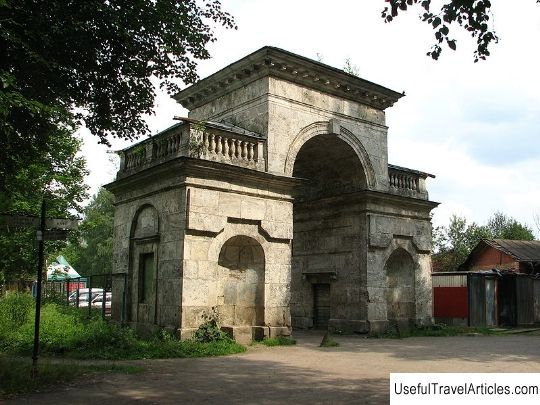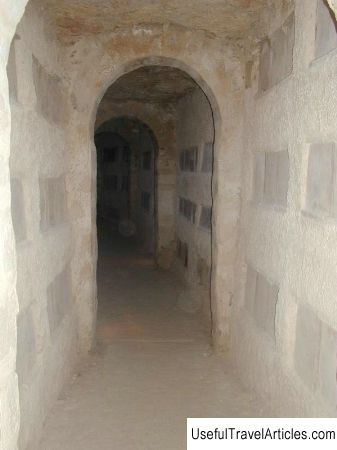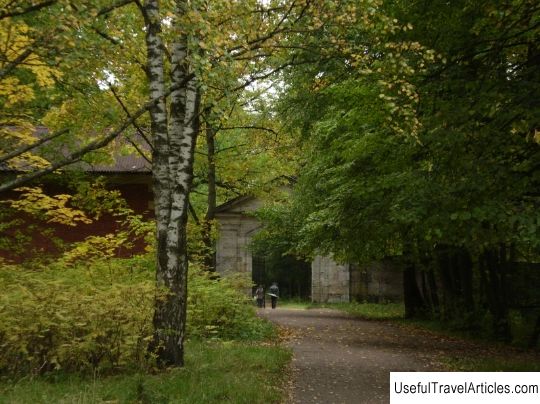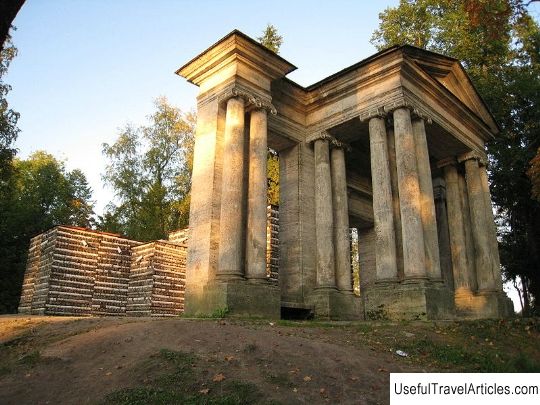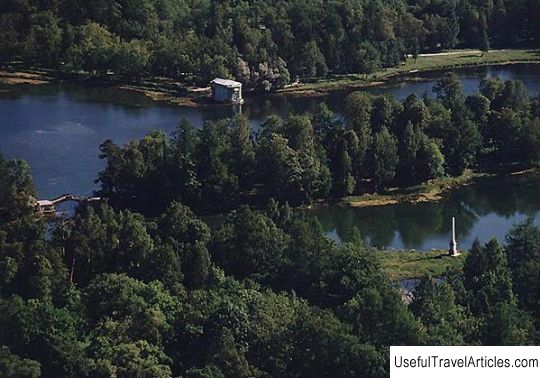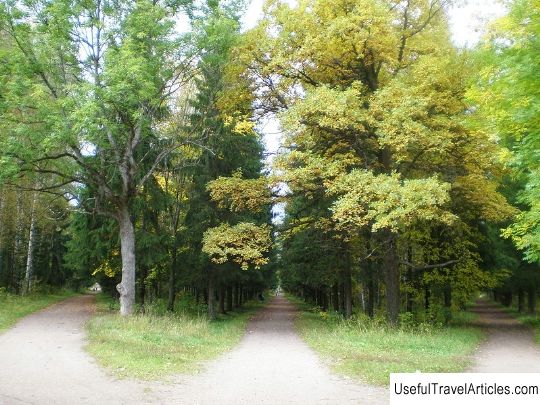Birch gate in the Palace Park description and photo - Russia - Leningrad region: Gatchina
Rating: 8,4/10 (443 votes) Birch gate in the Palace Park description and photo - Russia - Leningrad region: Gatchina. Detailed information about the attraction. Description, photos and a map showing the nearest significant objects. Photo and descriptionBirch Gate - a gate on the eastern border of the Palace Park, built at the end of the 18th century. designed by the architect V. Brenna and are his best creation in the Gatchina Park. In terms of their architectonics, they have no analogues among other palace and park buildings in the suburbs of St. Petersburg. The Birch Gate is the eastern entrance to the park. In addition, they are part of the English Garden ensemble, forming, together with the Birch House and the adjacent territory, the "Birch Plot". The composition of the gate consists of three parts. The bulk of the structure is created by two symmetrical, rectangular pavilions, which play the role of pylons framing the arched passage and supporting the upper tier of the gate. The upper part of the pavilions is crowned with cornices and platforms located above. The pavilions accommodate rooms that are illuminated by windows on the building's end facades. The entrances to the pavilions are located in the passageway, on the inner side of the gate. The outer facades of the gate have semicircular niches, where, according to the architect, the statues should have stood. The architectural solution of the gate is close in style to the architecture of Ancient Rome. The structure creates the impression of monumentality and triumphality due to the proportions of the structure as a whole and the ratio of its constituent elements. The height and width of the building of the same size create a feeling of stability and inviolability, and the monumentality of the structure is emphasized, as it were, by an arch sandwiched between massive pavilions. Far-out cornices and deeply cut niches give special expressiveness due to the play of light and shadow. This effect is also emphasized by the relief panels on the walls of the building. The birch gates are made of Pudost stone, which, due to its color and texture, focuses on the architectonics of the building, performing the rhythmic division of its elements: panels, friezes, strengthening the opposition of the bearing and supporting structures and optically emphasizing the elasticity of the span. The original concept the architect was different from the constructed gate. The project of the Birch Gate has survived to this day, 1790s. The main difference is in the more intense sculptural decor. The niches were supposed to install sculptures of Mars and Bellona. Instead of figured panels above the niches, there should have been sculptural medallions tied with garlands. In the upper part of the pylons there should have been grooves, above the arched vault - bas-reliefs of the flying geniuses of victory, on the frieze - compositions from antique trophy weapons. The gate was supposed to be crowned with a sculpture of the goddess Nike on an oval pedestal. The birch gate was built in 1795-1798. They were built by Giovanni Visconti, a stone master. The contract for the construction of the Birch Gate in the English Garden near the Birch House was concluded with a local merchant Martyan Vorobyov on January 24, 1795. On April 30, the local builder Kiryan Plastinin, a well-known participant in the construction of other Gatchina attractions, was attracted to the construction. The construction was supposed to be completed on September 1, 1795, but the extraction and subsequent processing of the stone lasted until 1797. By the end of 1797, the gate had already been built. But their decoration lasted until 1798 The fenced upper platforms of the guardhouse were designed and used, as one of the observation points of the Gatchina park. From here a view of the White Lake and the territory adjacent to the gate opened up. The platforms above the side pavilions in 1843 were covered with an iron roof. This significantly changed the overall appearance of the gate. At the same time, the stairs were demolished, which led to the observation platforms of the upper part of the guardhouse from the inner premises of the gate structure. The premises began to be used as a warehouse for gardening tools. In 1881, next to all the gates of the Palace Park, according to the design of the architect Ludwig Frantsevich Shperer, including, and next to the Birch Gate, red brick sentries were built. Originally the Birch Gate was called the “gate at the Birch House” because it was located not far from the Birch House, which was built earlier. In the middle of the 19th century.      We also recommend reading National Gallery description and photos - UK: London Topic: Birch gate in the Palace Park description and photo - Russia - Leningrad region: Gatchina. |
